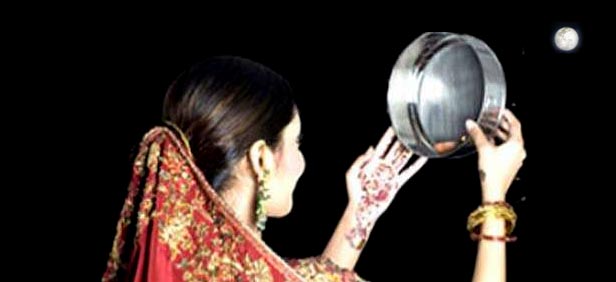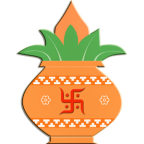No products in the cart.
In Hindu tradition, Karwa Chauth Fast symbolizes the sanctity of the relationship between a husband and wife. During this festival women observe a daylong fast for their husband’s longevity and success. The Festival is rejoiced nine days before Diwali and on fourth day of Kartik month as per Hindu calendar.
The festival reflects the excitement and splendor of being married where a woman reflects her marital status by adorning her hands with henna, cuddling in new ethnic wears, & accessorizing herself with jewelries.
Rituals and Customs:
The celebration of this pious occasion begins a day before when the newlyweds, brides-to-be & married women get gorgeously wrapped gifts as well as pots of baskets from their mother-in-laws. Tradition signifies that the mother-in-laws fill the earthen pots with a traditional food called “Sargi” which has to be taken by women at morning before sunrise. Sargi often comprises of food items like fruits, fried potatoes and milk based sweets that boost endurance of women.
Baya:
The Baya comprises of earthen pitcher, money, jewelry, clothes and sweets which is sent by woman’s mother to her in-law’s home. On the day of Karwa Chauth, married ladies adorn themselves beautifully same like bride.
Puja & Story:
All the women observing the fast get together & puja is held in the evening. The area where the puja is organized, is decked with ‘khariamatti’ means mud & an idol of Goddess Parvati is revered. Hours prior to moonrise, the traditional story of Karwa Chauth is narrated to the ladies gathered over there for puja. As per the legends, the fast of Karwa Chauth broken before moonrise by a young lady created consequences and took a toll on her husband’s life. Her husband came to life again after a period of seven Karwa Chauth vrats. This story is told to the married women, & a small prayer is recited at the worshipping ceremony for marital bliss.
Puja Setup Samagri:
- Ganeshji idol or photo, Shivji and Parvatiji picture
- Tamba (copper) or Clay Kalash (pot) or a Glass
- Red cloth (to cover the pot)
- Phalli (green beans), Ber (berry), Kachar (small cucumber)
- Coin, moli / red thread
- Paper or board
- Puja Thali Samagri:
- Kumkum, Chaval, Gud, Moli, Coin, Lamp, Flowers,
- Prasad : Churma or Halwa or Sugar in a small bowl
Puja setup:
- Fill up the kalash / glass with water. Put Phalli (Green bean), Ber (berry), Kachar (small cucumber) and Coin in the water. Cover the kalash / glass with red cloth and tie it with moli / red thread. This is called Karwa.
- On a board or the paper draw Chand (crescent moon), Suraj (sun) on the either side or swastika in the middle and 4 tikkis (dots) under it to represent Chauth Mata and place the Karwa on it.
- Place picture of Lord Shiva & Parvati and Ganeshji by the wall.
Puja steps
- Perform puja to Ganeshji, Shiva & Parvatiji, Karwa and Chauth Mata, by applying kumkum, chawal (rice), offering flowers and lighting lamp. Offer prasad of Churma or Halwa or sugar from the small bowl
- Recite story of Karwa Chauth and Ganeshji
- When the moon arises, do puja of moon by offering water, kumkum, chawal, flowers etc.
- Then exchange Karwa between two women 7 times. While exchanging Karwa recite the following line:
- Alternatingly, one lady asks ‘JAL DHAPI YA SAWAG DHAPI’ and other lady replies ‘JAL DHAPI SAWAG NAHI DHAPI’
- Then karwa / water is offered by one lady to another to drink and break the fast.
- Note: If you do not have company of other women your husband can offer water
- Take aashirwad / blessings of Elders.
Breaking the Fast:
Women break their daylong fast by the evening when they see the moon. The fast is often broken in the presence of husband & it makes it a ceremonial affair. Women start the fast breaking process by lighting an earthen lamp and filling a container with water. These items are placed on a traditional thali and carried to the place from where they see the moon. The hubby stands in front of his wife & wife sees the moon through a fine sieve. After that water is offered to the moon, & the wife looks at her husband through the sieve. This ritual is followed by a prayer for longevity, & after that husband feeds his wife her first morsel of food, or sip of water hence, breaking the fast. Karwa Chauth fast ends with a grand meal soon after where they celebrate the lovely moments.
Not just for married couples, but this festival signifies the cordial association with every family members.


